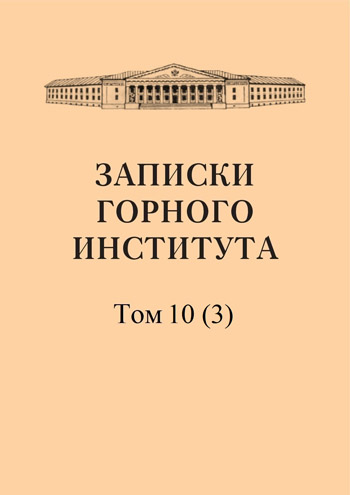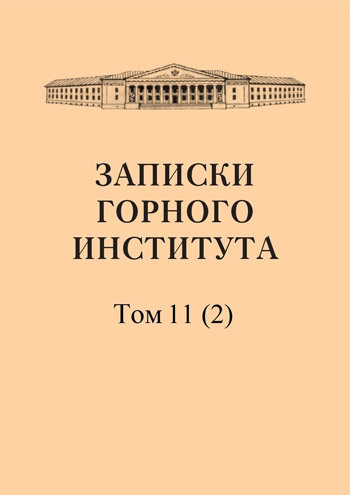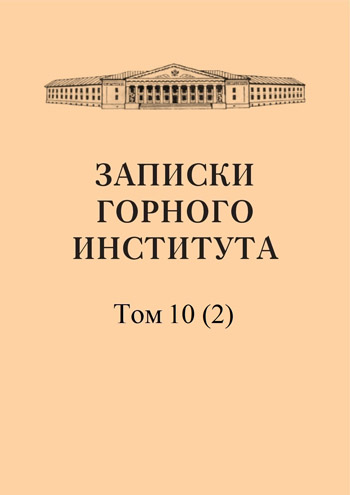-
Date submitted1936-09-22
-
Date accepted1936-11-09
-
Date published1937-03-01
About stresses in the cable during load hoisting
- Authors:
- N. P. Neronov
The calculation of a cable for strength is in practice somewhat conditional. It is based on the ratio of the breaking load to the static load, which is called the safety coefficient and the smallest value of which is established by the safety rules for lifting. Having set the value of this coefficient and using it to find the number and diameter of the wires , then we perform a verification of the safety factor, partially taking into account the actual stresses in the cable. However, since the latter are not completely taken into account, such a verification cannot give a sufficiently clear idea of the actual value of the safety factor. In the present study we limit ourselves to small lifting heights, bringing the question to the integration of a third-order ordinary differential equation.
-
Date submitted1936-09-17
-
Date accepted1936-11-13
-
Date published1937-03-01
Index of articles published in volumes I—X. "Notes of the Leningrad Mining Institute" (1907-1936) with an alphabetical index of their authors
- Authors:
- O. A. Mangus
Systematic index of articles
-
Date submitted1936-09-05
-
Date accepted1936-11-03
-
Date published1937-03-01
About inertial screens
- Authors:
- N. R. Malkin
A. About the simplest vibrations of the frame of an inertial screen. This part of the article discusses the conditions under which it can be considered that the screen oscillates perpendicular to the plane of its sieve. An inertial screen is a sieve inclined at an angle a (from 5 to 40°) to the horizon and supported by several (usually four) strong springs perpendicular to the screen frame (see article). B. On the movement of inelastic rock along a normally oscillating inertial screen. In this article I will limit myself to considering the motion of an inelastic particle: after hitting a screen, the particle will remain on it until its negative acceleration exceeds the acceleration of gravity; from this moment the particle breaks away from it and moves along a parabolic trajectory until a new collision.
-
Date submitted1936-09-19
-
Date accepted1936-11-03
-
Date published1937-03-01
On calculating the reserves of an ore deposit explored at the horizon and drilled at depth
- Authors:
- A. M. Zhuravskii
- S. P. Andreev
When calculating mineral reserves in deposits, instead of the volume of the actual ore body, the volume of a body that is sufficiently close to it and has the correct geometric shape is usually calculated. An unsuccessful choice of such a geometric body can lead to a significant decrease in the calculation accuracy or greatly complicate the calculations. In the practice of calculating reserves with such exploration data, the volume of the explored body was sometimes calculated as the volume of a cone with a base equal to the contoured area on the horizon, and with the apex at the point where the drill well exits the deposit, without taking into account the thickness of this latter. The calculation made in this way gave reserves below the minimum determined by exploration data, and the discrepancy reached a significant value of several tens of percent. Below are methods for calculating the volume of a conoidal body, which can serve to calculate the reserves of a part of an ore deposit limited by a contoured area at a certain horizon and cut by a drill hole at depth.
-
Date submitted1936-09-19
-
Date accepted1936-11-03
-
Date published1937-03-01
Sapropel oxidation products and their flotation properties
- Authors:
- D. A. Shvedov
- S. A. Kuzin
- A. Yu. Andreeva
The first tentative experiments on the production of carboxylic acids and their derivatives from balkhashite and Barzas sapromixites by oxidation for use as flotation reagents were carried out in 1932. These experiments, naturally, led to the idea of applying oxidation reactions to obtain these products to sapropel material. Results of the work: 1. The easy oxidability of sapropel material has been established, with a large yield (from 30 to 60%) of oxidation products extracted with organic solvents and alkalis. 2. The oxidation products of sapropel material (a mixture of carboxylic acids and their saponified derivatives) are characterized by high molecular weights and saponification numbers, low hydrogen content and insignificant iodine numbers. 3. The formation of acids soluble in petroleum ether has been established during the secondary oxidation of compounds soluble in sulfuric ether and a mixture of alcohol-benzene, which in their chemical properties are close to the acids of the petroleum fraction of primary oxidation. 4. The most effective oxidizing agent at this stage of work is nitric acid. 5. It has been established that the oxidation products of sapropels are flotation active, especially substances of primary and secondary oxidation, soluble in petroleum ether.
-
Date submitted1936-09-07
-
Date accepted1936-11-05
-
Date published1937-03-01
Hypothesis about the reasons for the easy flotation of sulfide minerals and the difficult flotation of oxidized ones
- Authors:
- D. A. Shvedov
The article sets out a reasonable hypothesis of the causes of mineral flotation. Its main principles are as follows: Insignificant flotation of “sulfide” minerals is due to the formation of halogen oxidation products on their surface, which react with collectors to form stable oriented films of the corresponding organic sulfide compounds of heavy metals, which are inseparable from the substance of the minerals. Cleavage of complete collection products from the surface is possible due to oxidation or as a result of intramolecular rearrangements, especially in the presence of excess collector. The reason for the strong floating of “oxide” minerals is the formation on their surface of unstable reaction intermediates between substances in the mineral and the reservoir. The effectiveness of sulfidization of oxidized minerals is due to the transformation of their surface into the corresponding hemisulfides, which are able to react with reservoirs. The article compares and discusses modern theories of the flotation ability of minerals.
-
Date submitted1936-09-08
-
Date accepted1936-11-18
-
Date published1937-03-01
Means of increasing the capacity of excavators
- Authors:
- N. I. Arkhipovich
This article makes an attempt to establish the completely achievable technical efficiency of excavators, taking into account the best achievements of practice and an analysis of all the capabilities of excavators. The study focuses on the design capabilities of excavators, methods of their use and working conditions. As a result, the possibility of increasing existing indicators and established standards has been proven. Although the conclusions drawn take into account real-world practice, they nevertheless need to be tested in the operating conditions of several enterprises.


